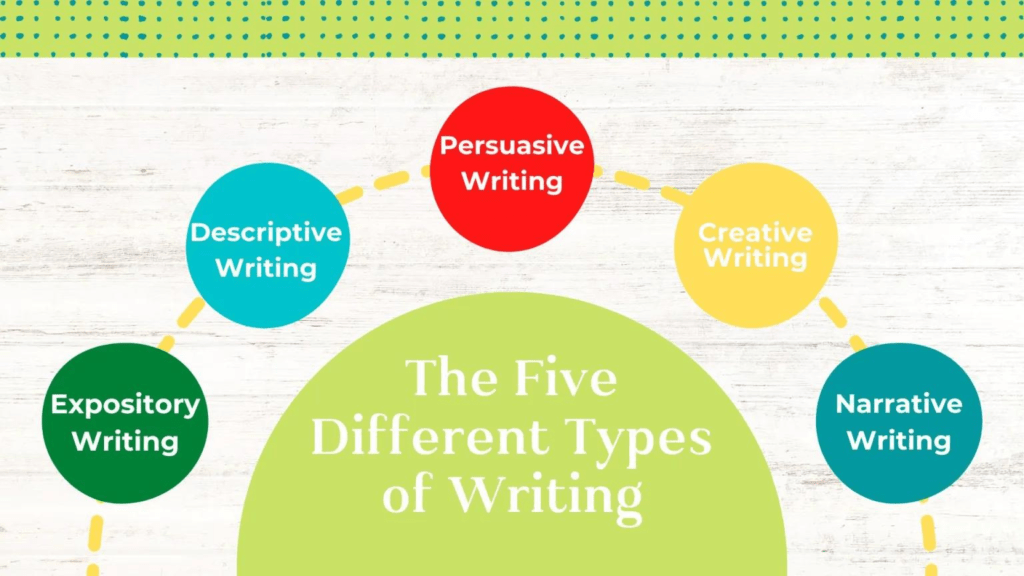
Writing 101: Everything You Need to Know to Get Started
I’ve been writing since I was four years old. Or younger, I don’t remember exactly. But what I do remember is that even in my earliest memories, there would always be a purple spiral notebook in my hand. I don’t know what drew me to writing.
It was just something that I did. A popular story I’ve known is that I couldn’t really express myself and writing was my refuge. Unlike other childhood pastimes, like drawing and trying to magic my younger siblings out of existence, this is the only “hobby” that has stuck.
Well, writing and reading are the only hobbies that have stuck. Yet, I find myself writing far more these days than reading. Besides, reading research papers isn’t reading for fun or reading as a hobby. It’s more of a necessity if I want to expand my skill set.
But that’s not the point.
The point is, writing is awesome. It lets you be your unfiltered, unhinged self. You can be as fantastical as possible, as creative as possible, and, unless you share your work with the rest of the world, no one needs to know.
It can be your secret.
That’s what makes writing so cool. You don’t have to write a story either. You could write about anything and everything that excites or irritates you. There’s no rule about what you can or cannot write about. As long as you’re comfortable doing it, there’s nothing you can’t write.
The same goes for the kind of writer you want to be.
In this blog post, I’m going to explain the differences between the different types of writing, and how you can get started. Of course, the best way to get started is simple: start writing. So, without further ado, let’s explore the different writing types.
The Five Different Types of Writing
Now, full disclosure, while researching the different types of writing, I found that, depending on who you ask, there are three, four, five, and even twelve types of writing. When I looked through these lists, I saw that many of what I refer to as “subtypes” were given their own categories.
So, for the sake of avoiding repetition and better understanding, I went back to my English books from middle school and high school just to see what I was taught growing up. I don’t know what the CIE (now CAIE) syllabus looks like today. But back in the day, we were taught that there were five types of writing. Here they are:
1. Expository Writing
Whenever you’re writing an expository piece, for the topic in question, ask the following: Who? What? When? Where? Why? How? The purpose of expository writing is to make sure that readers understand the facts of the matter. You can’t present your personal views and opinions. Instead, you provide the information to allow readers to form their own opinions.
This can be tricky, and writers must know precisely who their target audience is. Then, as per your audience, you can adjust the jargon and include examples. Expository writing provides news articles, scientific reports, case studies, and textbooks.
2. Descriptive Writing
Next up, you have the descriptive writing style, used to evoke emotions and create a mental imagery of an event or a scenaries. This particular style is often combined with other types of writing to help readers visualise ideas. Writers will often use metaphors and similes and really anything to accurately paint a picture with words.
As you can imagine, it is found most prominently in novels, short stories, poems, memoirs and, sometimes, also in sales and marketing materials. While it can be argued that this is one of the “subtypes” I spoke of, the amount of literary devices and tools used in this form of writing gives it its very own type.
3. Persuasive Writing
Persuasive writers employ various literary tools to convince their audience to think a certain way or form opinions about something. This requires them to cite evidence and facts supporting their views, such as expert testimonials or evidence from witnesses.
Moral and ethical arguments and religious beliefs can also be used to convey a message and influence audiences and readers. In school, we primarily used persuasive writing for parliamentary debates. In reality, it’s for political campaign speeches, recommendation letters, op-eds, opinion columns, and more.
4. Narrative Writing
I’m pretty sure most people are familiar with narrative writing. It’s used for storytelling purposes, describing what happened somewhere or to someone, be it fictional or non-fictional. A chain of events within a narrative creates a plot, creating a novel or short story.
5. Creative Writing
And finally, we have creative writing. A creative writer usually incorporates other traditional styles to convey an idea or emotion to their readers. They may use their words to share a message or create a story. Modern creative writers use images, audio, and even video as part of their content. It is here that you’ll find most of the media you’re exposed to these days. Examples include blogs, articles, plays, poems, stories, novels, and even sensationalized news pieces.
How to Get Started
No matter what writing style you choose to partake in, you’ll always need a place to start. Sometimes, we’ve got great ideas but we don’t know what to do with them. This section is designed to be a bit of a guide on how you can get started with that idea you absolutely have to put down on paper.
1. Topic Research
People usually associate topic research with articles or blog posts. Still, you need to know what you’re talking about these days. Even if you’re writing a speech or a novel. If you give the impression that you don’t have a concrete idea of what you’re trying to say, your readers will pick it up.
This can seriously damage your reputation, and in the literary world, reputation is everything. So, the best way to begin would be by understanding what you’re doing. Of course, it’s harder to do “topic research” for novels. After all, what if it’s a fantastical idea that requires you to build your own world?
In those cases, I would recommend looking into literary tropes, particularly the overused ones (looks at vampires and werewolves). Even if you think you’ve come up with an original, never-done-before plotline, you might want to look around in case there’s something similar. After all, you can then make notes on their shortcomings and avoid them, which brings us to…
2. Outline/Mind Map
Once you’ve done your research, you can start outlining or creating a mind map of what you plan to do. For articles, it’s simple. There’s an introduction, a conclusion, topic headings and then their subheadings and more.
For speeches, there’s a similar flow: introduction, arguments, sometimes a counter argument, and finally a conclusion.
But for short stories and novels, you’ll need a more extensive mind map. When creating short stories, I like to follow the start-climax-conclusion model. I was taught this waaay back in third grade, and it’s something I’ve always found myself returning to, no matter how complex my plot is.
(diagram of the slope)
As you can see, this mountain/slop model can help you create tension and suspense before slowly (and sometimes quickly) reaching the end. It’s perfect for character and mapping out conflicts and resolutions.
3. The Writing Process
Once you’ve got the research and outlining done, you can begin with writing. Everyone writes differently. Depending on my mood, I can write anywhere between 1,000 to 5,000 words a day. Yet, sometimes, I can’t even type 500 words.
For writers, our job is to write so it can be quite easy to fall into the nasty, gaping blackhole that is the writer’s block. When you have a new idea, it can be quite easy to give in to the enthusiasm of the moment and go overboard.
Unfortunately, sometimes, when you write 10,000 words in a day, you’ll find that you’ve lost your motivation the next day. Some writers have written whole novels in a week, and that’s really just a matter of how you’re feeling.
The muse hits all of us, but she can abandon us just as quickly. For novelists, I would recommend pacing yourself.
Here’s What I Do
As someone who’s actively writing short stories (and possibly a book), here’s what I do: depending on the workload for the week, I’m usually writing between 1,000 to 2,000 words daily. Luckily, my job requires me to think more about structure and how we communicate to our audience, so it’s a very refreshing process overall.
However, at a company I previously worked at, we’d do anywhere between 3,000 to 4,000 words a day. It really depends on the topic. It’s easier to write 4,000+ words if the topic is easy and more widely understood.
But when you’re translating technical stuff to a general audience, it’s difficult. Therefore, as a writer, especially a copywriter, it is very important that you choose a specialization. What do you like to write about? It’s very important that you write on subjects you enjoy otherwise, you’ll be miserable.
Trust me,I know. I cannot, for the life of me, write medical blog posts. I just can’t do it. But writing about stuff you like really helps.
So, after my working hours are done, I reserve an hour or two in the evening for my book. At present, I’m in the editorial process but when I was actively writing, I used to stop myself at 1,000 words a day. It helps manage the writer’s block and you can get a lot done.
4. Formatting
In the end, once the writing’s done and the dust has settled, you’re left with one important aspect: formatting. This step is crucial for copywriters because we’ve got to optimize our content and make sure it’s user-friendly. For speech writers, it’s all about the formatting, too, because it can draw attention to specific points. For novelists, well, sometimes you have got to break down those really, really long chapters.
I’ll admit that I’ve got no solid advice for formatting. Every writer formats their work based on what fits well with their audience. However, I will say that it’s a critical step. Don’t skip it.

A Final Word
So, with that being said, we’re finally at the end of this blog post. Fun fact: this is one of the longer pieces I’ve ever written for this blog, and I really tried covering everything to get you started.
This isn’t just it though. The writing process is time-consuming and there’s so much to learn. In the next few weeks, I’m going to look at things like tone and structure in more detail. I also plan on talking about some of the best writing courses out there and the ones I took and personally enjoyed. So, stay tuned for that!
Best,
Sura



One Comment
tlo
Just want to say your blog is astounding. The clearness to your write up is simply spectacular and suppose you’re an expert in this subject. Thanks a million and please continue the enjoyable work!